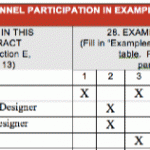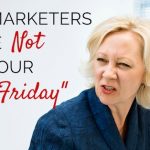As I laid out in my last post, I had certain goals for our website redesign. They included:
- Reduced Bounce Rate and Increased Conversion
- Increase Time on Site
- Better Placement on Google
- Succes(s) Approach to Text
Two Blogs
Increasing time on the site and better placement on Google had an obvious solution. We incorporated two different blogs into the website. The first is a blog indicating news and events related to our firm. The other blog is called “Ideas & Insights.” The plan with this blog was to post a compelling article once a month.
Would we get better search results with a post a week or even a day? Of course, but I would rather under promise and over deliver than over promise and under deliver. The challenge with blogging isn’t creating that first post, it is creating that 20th or 30th post. I would caution any A/E/C firm thinking about starting a blog not to set expectations too high. One post a month is sufficient. One post a week is fantastic. One post a day, unless you are HOK, is going to be a challenge to keep up.
I prefer quality over quantity. I find many blogs that post everyday start to get boring. The reader starts wondering why he/she is reading the same stuff over and over again.
Visitors can sign up to receive Ideas & Insights in their email. The blog is connected to Mailchimp. Mailchimp watches the blog’s RSS feed and, as each new post arrives, sends it to the subscribers.
To Spam or Not To Spam
Let’s talk about this for a minute. People think I’m crazy because I’m so outspoken with my anti-email newsletter stance. It’s not that I’m against email newsletters, it’s that I’m against spam. I shot down the idea of email newsletters many many times at my firm. Nobody reads your email newsletters. The blog to RSS to email solution is so elegant because it’s “opt in.” It’s what Seth Godin coined as “permission-based” marketing.
People are more likely to read stuff they actually sign up for. Let’s look at some statics. On average if you send an email newsletter in our industry, you can expect 16% of people to open it. 43.4% open Ideas & Insights. You can expect even less, 2.8%, to click on any links. 22.6% click on our links. Frankly, those numbers represent significant differences.
Interface Changes
On to reducing bounce rate. Most of our visitors “land” on the home page. So most of the bouncers are bouncing from our homepage. I wanted them to click through to learn more about us or, better yet, contact us.
I did a few things on this front. First, I introduced a button at the bottom right of the page to entice users to contact us.
Remember those two blogs I mentioned? They come into play here too. You can subscribe to Ideas and Insights right from the home page. It is placed on the bottom right because that’s where your eye lands.
But let’s go further down the rabbit hole. On the left-hand side of the homepage, I have the running list of the four most recent news items.
Ok, that’s normal. But once you go beyond the homepage, that list changes to the most recent Ideas & Insights. The concept behind this is when people visit the homepage of your site, they may be willing to click on some exciting news about your firm. At the very least, it is a good opportunity to impress them. But once they have committed to going further into the site, they are probably more interested in technical content (Ideas & Insights).
It’s About The People, Stupid
One of the things I learned from capturing data about our site is that the most visited portions of our site were pages about people. If you look into the data for your site, you may find something different. But our visitors were interested in people. So, much of the site is centered around people. For example, if you were to read one of the Ideas & Insights you could click the name of the author and it will take you to his or her profile page.
Also, you can email any one of our people directly from their profile page. This is very common on law firm websites, but it is very uncommon for the websites of A/E/C firms.
Another thing we added, which I feel is uncommon, is a button on our contact us page that takes you back to the people. This was actually an interesting thought that came from our president. Nobody wants to fill out a form to contact a firm or email a generic address (both of these are also options by the way). They want to speak to a real person. So why not direct them to real people?
One of the standard sections in any website is the “About Us” section. I didn’t want an about us page that spoke some generic nonsense about the firm. Honestly, nobody cares. 99% of those pages don’t pass the “so what?” test. So I asked each of the principals to give me a little quote. The first was from our CEO and founder. The topic I gave him was “what compelled you to start the firm?” This is what I got from him later that day, and I think it’s pretty great because it is very much in his voice.
I wanted visitors to come away from the “About Trauner” page feeling like they know what the people at Trauner are about. And I think the page achieves that goal.
I think the big take away here is that the major concepts of the website redesign were not centered around the look. They were focused on the text and what and how it would communicate to visitors. In addition, many of my decisions were based upon data I had collected about our website.





Speak Your Mind